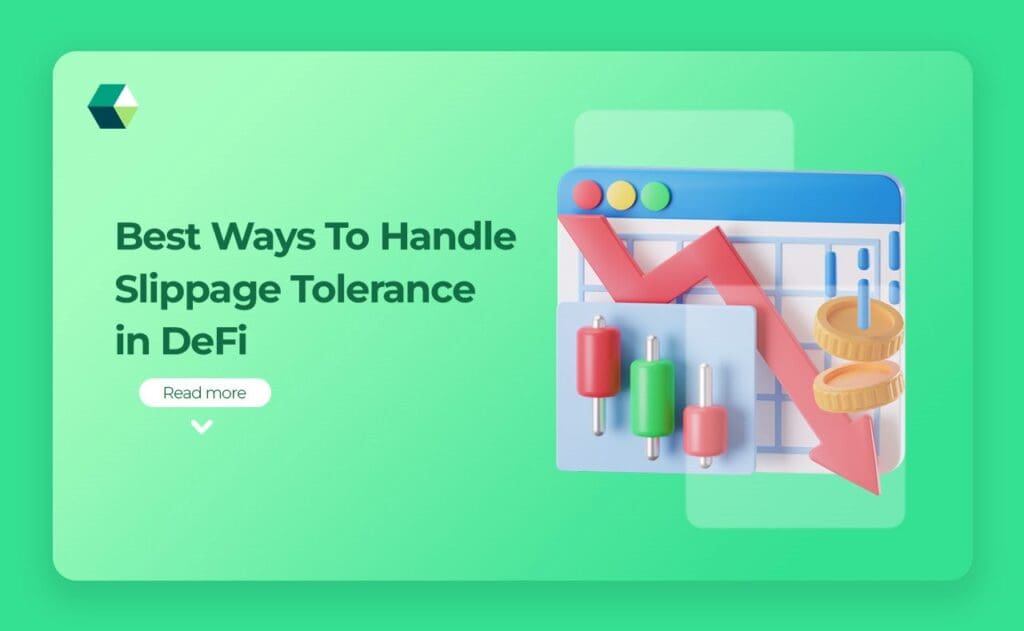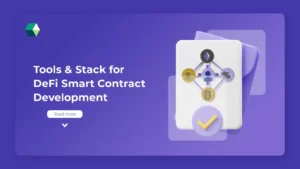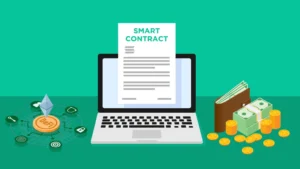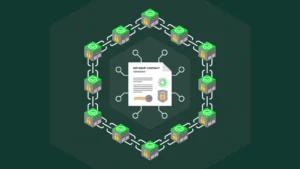
Slippage Tolerance is a crucial aspect of Decentralized Finance (DeFi) that can significantly impact your trading strategy. Slippage occurs when the price of an asset changes between the time an order is placed and when it is executed. It can lead to unexpected costs, especially in volatile markets or low-liquidity pools. Effectively handling slippage tolerance is crucial for both retail traders and institutional participants to optimize their DeFi strategies. Slippage tolerance is the maximum percentage of price movement you are willing to accept for your trade to execute.
What is Slippage Tolerance in DeFi?
Slippage tolerance refers to the maximum percentage difference between the expected price of a trade and the actual execution price that a trader is willing to accept. This tolerance level helps DeFi Development Company to manage the risk associated with price fluctuations that can occur between the time a trade is initiated and when it is completed. When trading assets on a DEX, the price of an asset can change rapidly due to market volatility or low liquidity. Slippage occurs when the final price of a trade deviates from the price at which the trade was initially requested. Setting a slippage tolerance allows users to specify the acceptable range of price deviation they are willing to tolerate. For example, if a trader sets a slippage tolerance of 1%, and the price moves by 1% or less from the expected price, the trade will proceed. If the price moves beyond this range, the trade may be canceled or fail to execute.
How Does Slippage Tolerance Occur in DeFi?
Slippage tolerance in decentralized finance (DeFi) occurs due to the inherent volatility and liquidity dynamics of Decentralized Exchanges (DEXs) and Automated Market Makers (AMMs). When a trade is initiated, the price of the asset can change between the time the trade is submitted and when it is executed. This price fluctuation is known as slippage. DeFi Consulting Solutions provide guidance on setting appropriate slippage levels based on market conditions and liquidity. Slippage tolerance is the threshold that traders set to determine how much deviation from the expected price they are willing to accept. For instance, if a trader sets a slippage tolerance of 2%, they allow for a 2% variation in the final execution price compared to the initial quoted price. This tolerance helps to ensure that trades are completed even in volatile conditions, where prices may shift rapidly.
Best Ways To Handle Slippage Tolerance in DeFi
-
Set Appropriate Slippage Limits
Adjust your slippage tolerance based on Current Market Volatility and liquidity. Higher slippage tolerance may be necessary for assets with lower liquidity or during volatile conditions.
-
Monitor Market Conditions
Regularly check market conditions before making trades. Understanding price trends and liquidity can help you set a realistic slippage tolerance.
-
Use Limit Orders
Whenever possible, use limit orders instead of market orders. Limit orders specify the maximum price you’re willing to pay or the minimum price you’re willing to accept, reducing the impact of slippage.
-
Adjust Tolerance Dynamically
Be prepared to adjust your slippage tolerance based on Real-Time Market Changes. Tighten tolerance in stable conditions and widen it during periods of high volatility.
-
Use Advanced Trading Tools
Employ tools and analytics that help predict price movements and manage slippage more effectively.
-
Review and Update Settings
Periodically review and adjust your slippage tolerance settings based on your trading history and changing market conditions.
-
Choose Reputable Exchanges
Trade on well-established and liquid decentralized exchanges to minimize the chances of significant slippage.
Risks Of Setting Slippage Tolerance Too Low
Setting slippage tolerance too low in decentralized finance (DeFi) can introduce several risks that may impact the effectiveness of your trades. When Slippage in DeFi is set too narrowly, trades may fail to execute if the price moves slightly beyond the specified tolerance. This can result in missed trading opportunities, especially in volatile markets where prices can fluctuate rapidly. To mitigate these risks, it’s advisable to consult with DeFi Consulting Services. A low slippage tolerance may also lead to higher transaction failures during periods of high volatility or low liquidity. In such scenarios, even small price deviations can prevent trades from being completed, potentially causing delays or forcing you to trade at less favorable prices. This can be particularly problematic in fast-moving markets where timing is crucial.
Common Mistakes Traders Make Regarding Slippage Tolerance
One common mistake traders make regarding slippage tolerance is setting it too low without considering market volatility and liquidity. When slippage tolerance is set too narrowly, it can lead to transaction failures if the market price shifts slightly beyond the set limit. This can result in missed trading opportunities, especially in highly volatile or illiquid markets where prices can change rapidly. Traders may find themselves unable to execute trades at their desired prices, leading to potential losses or missed gains.
Another frequent error is not adjusting slippage tolerance dynamically based on real-time market conditions. Traders who use a fixed slippage tolerance across different market environments may face difficulties when market conditions shift unexpectedly. For instance, a tolerance level that works well in a stable market might be inadequate during periods of high volatility. To avoid these pitfalls, seeking advice from DeFi Consulting Experts can provide valuable insights and strategies for setting and managing slippage tolerance effectively, tailored to specific trading scenarios and market conditions.
Tools That Help Manage Slippage Tolerance in DeFi
-
Slippage Calculators
These tools allow traders to estimate potential slippage based on current market conditions and the size of the trade. By inputting trade details, users can gauge the expected slippage and adjust their tolerance accordingly.
-
Trade Bots and Automation
These tools help ensure that trades are executed efficiently even when market conditions change rapidly, which is particularly useful for traders working with a Decentralized Finance (DeFi) Development Company.
-
Liquidity Analytics Platforms
These platforms provide insights into the liquidity of various assets and trading pairs. By understanding the liquidity levels, traders can set more informed slippage tolerance limits and reduce the risk of transaction failures due to insufficient liquidity.
-
Advanced Trading Interfaces
Many advanced trading interfaces offer features like adjustable slippage settings and real-time price impact analysis. These interfaces allow traders to customize their slippage tolerance settings and monitor how price fluctuations affect their trades, enhancing trading efficiency.
Why Choose Nadcab Labs For Slippage Optimization?
Choosing Nadcab Labs for slippage optimization ensures that you receive top-tier expertise and solutions tailored to your specific DeFi needs. As a leading Blockchain Development Company, they offer advanced tools and strategies to help manage and optimize slippage tolerance effectively. Their team leverages extensive experience in blockchain technology and decentralized finance to provide customized solutions that enhance trading efficiency and reduce risks associated with price fluctuations. They employ cutting-edge technology and industry best practices to analyze market conditions, adjust slippage settings, and implement dynamic trading strategies.







